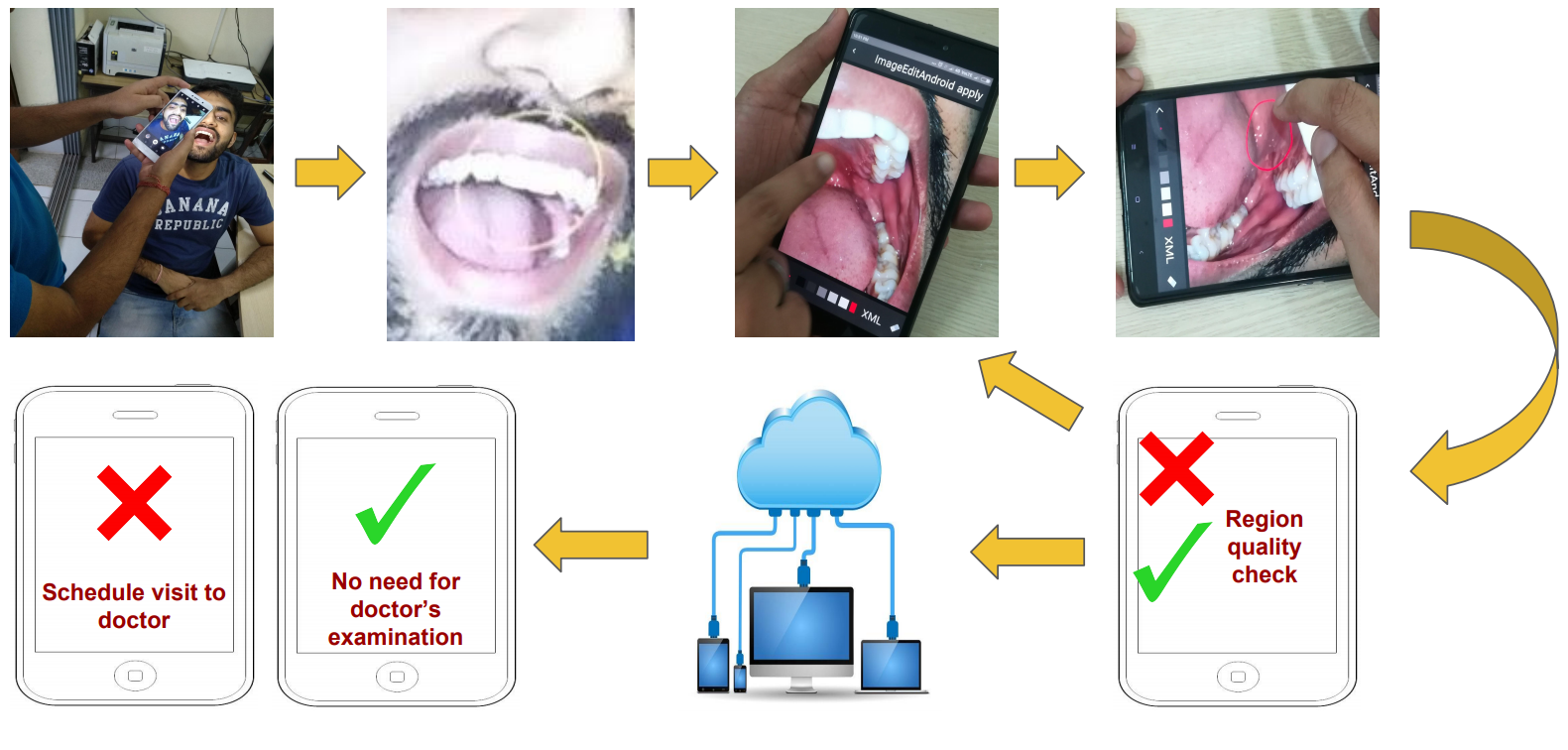
Automated aid for screening of oral cavity lesions – A feasibility study (Ongoing) (Ongoing)
PI: Prof. Amit Sethi, Electrical Engineering Department
Tata Fellow: Akanksha Shreshtha (2019-21)

We propose to determine the feasibility of developing a smartphone app powered by artificial intelligence (AI) to flag candidates for oral biopsy on which a primary healthcare worker can be trained in a few hours. We zeroed in on the idea of a smartphone app due to the ready availability of smartphones with cameras and LED lighting to take images of the oral cavity. Using an app with a computationally light AI-based inference engine or by transmitting images to a heavy-duty AI inference server over the mobile network, will be the backbone of a subsequent affordable and scalable solution. In this work, we propose to determine the feasibility of developing the AI-based decision engine whose key determinant is the size of the image corpus required for training a machine learning decision engine, with acceptable false positives and very low false negative rates.

